Rare and important–Learn How to Force Spider Plants to Flower. Because more flowers mean more spiderettes and more new spider plants.
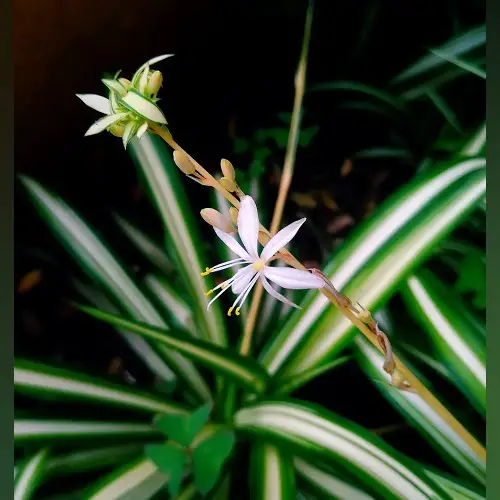
If you want to increase your spider plant collection, making them bloom is a great way to do so. In this guide, we will explore the options on How to Force Spider Plants to Flower for more spider plants.
Spider Plants Information
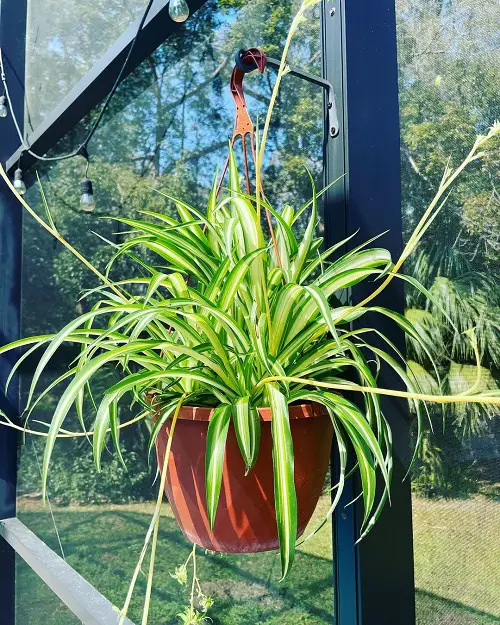
Spider plants (Chlorophytum comosum) are popular indoor plants due to their proven air-purifying qualities and easy care requirements. These plants produce small, white flowers that eventually become baby spider plants, making them a great option for propagating and expanding your plant collection.
However, sometimes spider plants need a little encouragement to flower. In this article, we will explore how to force spider plants to flower and have more spider plants.
Learn about Spider Plant Care Indoors here
How Often Do Spider Plants Flower?
Spider plants will flower periodically, depending on the environment and growing conditions. Generally, these plants will flower in the spring or summer months, but some varieties can also bloom in the fall.
How to Get Spider Plants to Flower?
While the lack of blossoms and plantlets on your Spider Plant may be due to natural factors and the growing environment, there are some practical tips you can follow to promote more flower growth.
1. The Effect of Long Nights
Spider plants tend to initiate flowering when exposed to short periods of daylight and long nights, following which they produce their offsets or more tiny spiders, which are called spiderettes.
While this happens naturally, to induce flowering forcefully in a spider plant, it is necessary to subject it to complete darkness for a period of 12-16 hours, followed by 6-9 hours of partial or indirect sunlight each day.
It is essential to avoid any form of light during the dark phase, as it can disrupt the flowering process. Maintaining this regimen consistently for 6-8 weeks can help force the spider plant to bloom.
Want more Spider Plant Babies? Click here
2. Keep the Plant Slightly Root Bound
It may come as a surprise to some gardeners that many Spider Plants thrive in slightly root-bound conditions in order to produce blooms.
When the plant becomes root-bound, it signals the plant to focus its energy on flowering and producing plantlets, as there is limited space for it to grow downwards.
3. Fertilize the Plant in a Correct Manner
To ensure the healthy growth of spider plants, it is important to fertilize them properly. A 3:1:2 NPK ratio fertilizer should be used, and application can occur once in 2 to 4 weeks during the active growth period in the spring, summer, and early fall. The frequency depends on the strength of your fertilizer. For example, if you’re applying it in a weak dose–you can feed it more frequently.
It is possible to induce flowering in a spider plant by subjecting it to mild stress and providing it with low levels of fertilization, which can deceive the plant into initiating the blooming process–you can try and experiment.
4. Give the Plants a Right Mix of Direct and Indirect Light
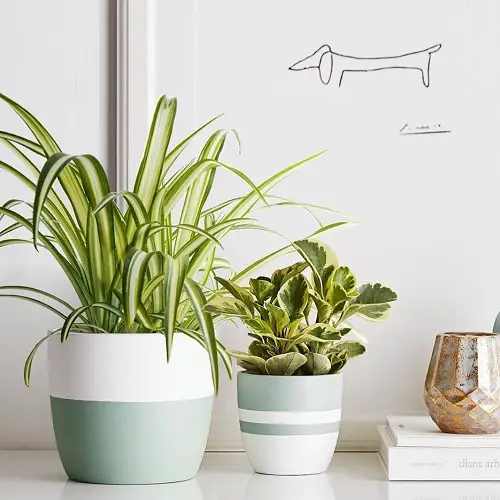
This pan-tropical plant thrives in areas with dappled sunlight, as too much direct sunlight can lead to burnt leaves. It is best to keep the plant in bright, indirect sunlight and rotate it periodically to ensure even light distribution.
In addition to lighting conditions, the optimal amount of darkness is also crucial for flowering. As a photoperiodic and long-night plant, it requires more darkness than light to produce blossoms. Providing your plant with approximately 12 hours of darkness per day is recommended.
5. Use the Right Type of Growing Medium
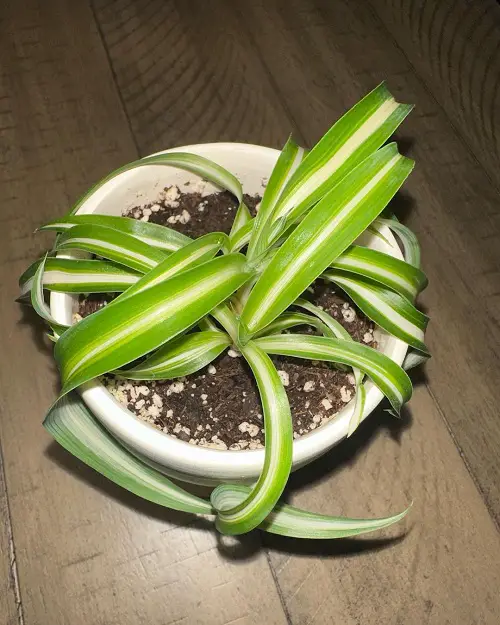
Using loamy and moist soil with a slightly acidic to neutral pH is ideal for growing Spider Plants. In contrast, the plant can survive in a variety of potting mediums.
6. Provide Perfect Temperature and Humidity
Spider Plants grow well in warm temperatures and moderate to high humidity levels. During the blooming season, temperatures should be maintained between 60-90°F (15-32°C), and humidity levels should be kept between 40-80%.
It is crucial to avoid temperatures dropping below 55°F (12°C) at night, as this can negatively affect the plant’s ability to bloom. Extreme high or low temperatures can also impact flowering, while low humidity levels can harm the plant’s overall health and appearance.
7. Wait for the Plant to Become Mature
Spider plants typically do not produce flowers when they are too young and newly established. To increase the likelihood of flowering, it is recommended to obtain a mature specimen or wait for it to become at least 2 years old.
What Happens After Flowering?
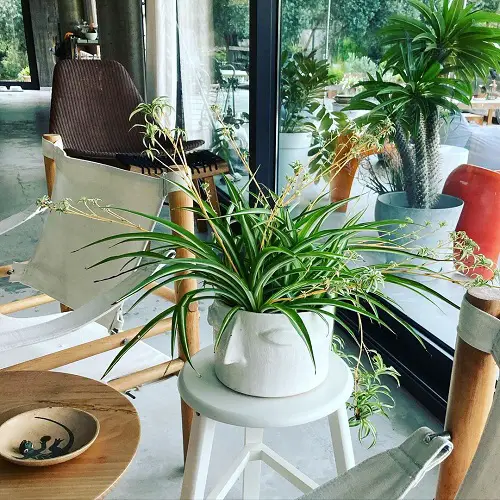
Once Spider Plants finish flowering, they produce additional leaves at the end of their stems, which eventually form small plantlets or spiderettes. In the event of pollination, the plant will produce a leathery, three-angled capsule-shaped fruit containing flat black seeds.
Read about Spider Plant Benefits
Should You Cut Spider Plant Flowers?
Spider plant flowers do not require pruning unless you intend to use them for a specific purpose. However, if your plant is looking dull and dying, you may trim the flowers to redirect the plant’s energy toward growing more extensive and healthier leaves.
When flowers begin to shed their petals, the plant’s focus is on developing seeds rather than on producing new flowers. If you are interested in propagating the spider plant, you should allow the flowers to remain so that they can produce seeds. You should also remember it is those flowering stems from where offsets emerge, and trimming can reduce your chances of having more spider plants.





Thanks for info; very good advice